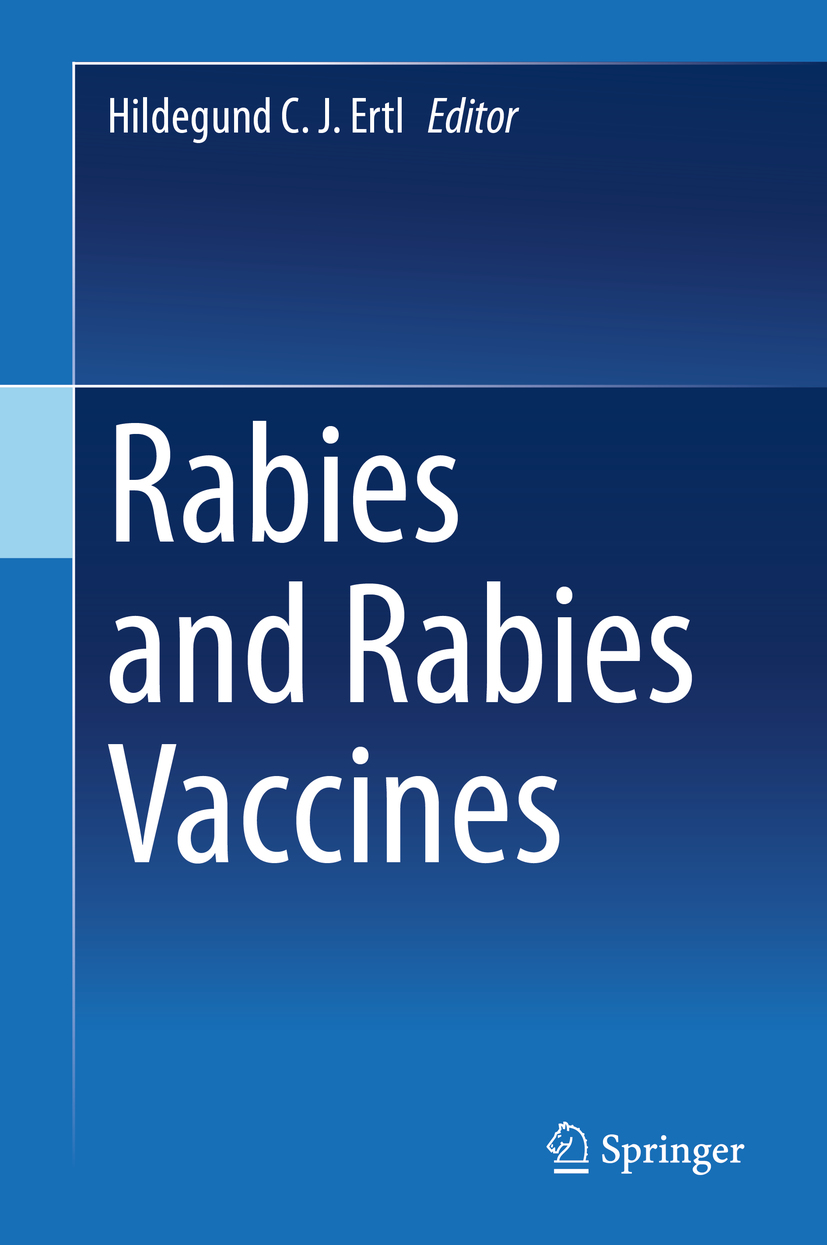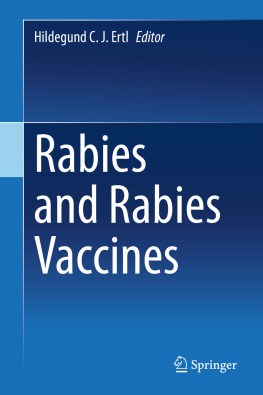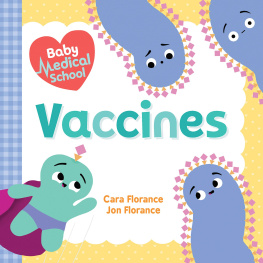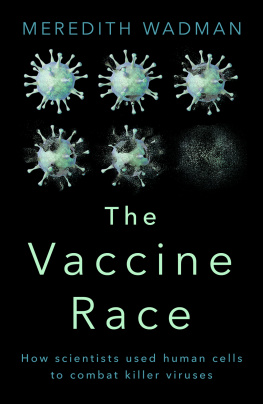Hildegund C. J. Ertl - Rabies and Rabies Vaccines
Here you can read online Hildegund C. J. Ertl - Rabies and Rabies Vaccines full text of the book (entire story) in english for free. Download pdf and epub, get meaning, cover and reviews about this ebook. year: 2020, publisher: Springer International Publishing, genre: Romance novel. Description of the work, (preface) as well as reviews are available. Best literature library LitArk.com created for fans of good reading and offers a wide selection of genres:
Romance novel
Science fiction
Adventure
Detective
Science
History
Home and family
Prose
Art
Politics
Computer
Non-fiction
Religion
Business
Children
Humor
Choose a favorite category and find really read worthwhile books. Enjoy immersion in the world of imagination, feel the emotions of the characters or learn something new for yourself, make an fascinating discovery.
- Book:Rabies and Rabies Vaccines
- Author:
- Publisher:Springer International Publishing
- Genre:
- Year:2020
- Rating:5 / 5
- Favourites:Add to favourites
- Your mark:
- 100
- 1
- 2
- 3
- 4
- 5
Rabies and Rabies Vaccines: summary, description and annotation
We offer to read an annotation, description, summary or preface (depends on what the author of the book "Rabies and Rabies Vaccines" wrote himself). If you haven't found the necessary information about the book — write in the comments, we will try to find it.
Rabies and Rabies Vaccines — read online for free the complete book (whole text) full work
Below is the text of the book, divided by pages. System saving the place of the last page read, allows you to conveniently read the book "Rabies and Rabies Vaccines" online for free, without having to search again every time where you left off. Put a bookmark, and you can go to the page where you finished reading at any time.
Font size:
Interval:
Bookmark:


This Springer imprint is published by the registered company Springer Nature Switzerland AG.
The registered company address is: Gewerbestrasse 11, 6330 Cham, Switzerland
This book is dedicated to rabies virus and the different vaccines that are available or under investigation to combat this deadly pathogen. Why do we need another book on a disease that no one living in developed countries worries about unless it is time to go and get pets vaccinated. The fact we do not worry about rabies is the reason we decided to write this book. Rabies is a neglected disease, a disease we do not fear and therefore do not invest in. While I am writing this preface, we are in the middle of a dreadful pandemic caused by a new coronavirus, called SARS-CoV-2, which by now in mid-April of 2020 has killed over 100,000 people and is estimated to kill by August 2020 about 60,000 humans in the USA. Rabies each year kills 60,000 humans and that number is likely an underestimate. While SARS-CoV-2 has been dominating the news for weeks and resulted in massive global shutdowns, no one raises the alarm about rabies for it is a disease of the underprivileged. Rabies is preventablewe have vaccines and other biologicals that can protect humans, their pets, and even wildlife animals; nevertheless, the death toll due to this virus, which is the most fatal of all viruses that can infect humans, has not declined in decades. We hope that this book written by rabies experts, many of whom serve as advisors to international health agencies, such as the World Health Organization, will not only serve as a guidance for health care professionals dedicated to the treatment and prevention of rabies, but also raise awareness in others. I wish to thank the authors, who contributed.
Rabies has shaped humanity for centuries and continues to be one of the few pathogens that have a near 100% case fatality rate following the onset of clinical disease. Rabies virus, as with all related viruses within the Lyssavirus genus, is spread via the mechanistic action of the bite of an infected animal. Lyssaviruses are strongly neurotropic and as such most often require the dermal barrier to be breached to enable access to and infection of the nervous system. The domestic dog represents the principal reservoir of rabies virus globally and 99% of human cases involve the bite of an infected dog. Lyssaviruses are predominantly shed through saliva and so although a bite appears to be the most efficient mechanism of transmission rare alternative routes, including organ transplantation, have been reported. Despite the near 100% case fatality rate, post-exposure intervention can prevent the development of clinical disease and resulting fatality. Vaccines against rabies have been available, in various forms, for over 100 years and alongside the observation that passive immunisation with rabies immunoglobulin can completely prevent disease when administered pre-clinically the disease is entirely preventable. However, in endemic regions the cost and availability of post-exposure vaccines and immunoglobulins often precludes their use and rabies develops with the concomitant high fatality reported in endemic countries. The need for efficacious and yet cheaper pan-lyssavirus vaccines and biologicals to both prevent and treat rabies remains an important issue for future development. Furthermore, a lack of adequate reporting systems means that rabies is grossly underreported and that the burden of disease may be considerably higher. This chapter considers the basis of rabies classification, epidemiology and pathogenesis is reviewed highlighting areas for potential improvement in our understanding of this important group of viruses.
Rabies is an ancient zoonotic disease caused by viruses of the order Mononegavirales, family Rhabdoviridae, and genus Lyssavirus [].

Font size:
Interval:
Bookmark:
Similar books «Rabies and Rabies Vaccines»
Look at similar books to Rabies and Rabies Vaccines. We have selected literature similar in name and meaning in the hope of providing readers with more options to find new, interesting, not yet read works.
Discussion, reviews of the book Rabies and Rabies Vaccines and just readers' own opinions. Leave your comments, write what you think about the work, its meaning or the main characters. Specify what exactly you liked and what you didn't like, and why you think so.









